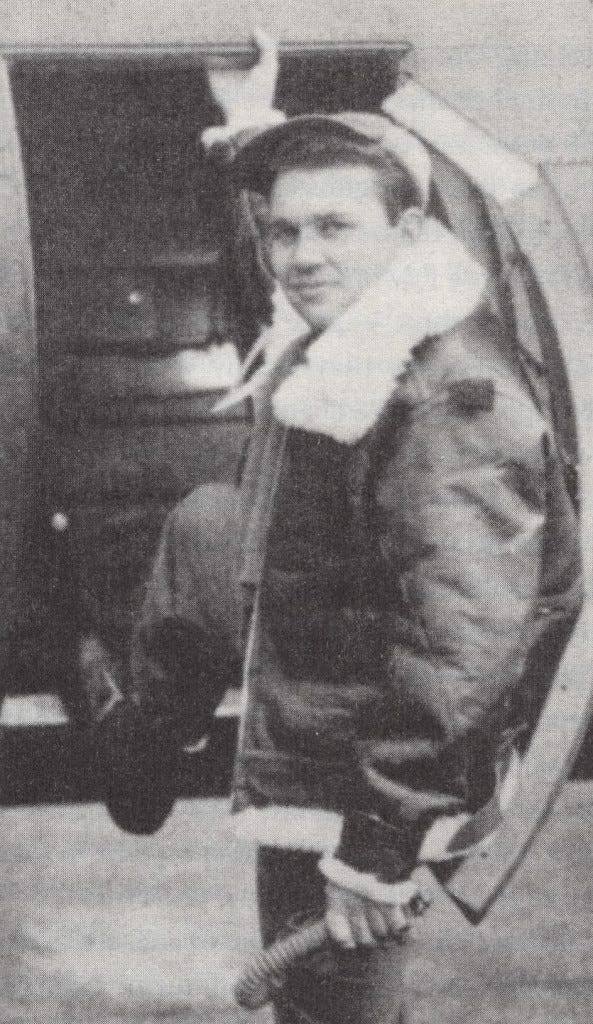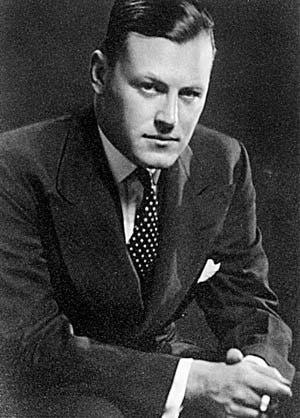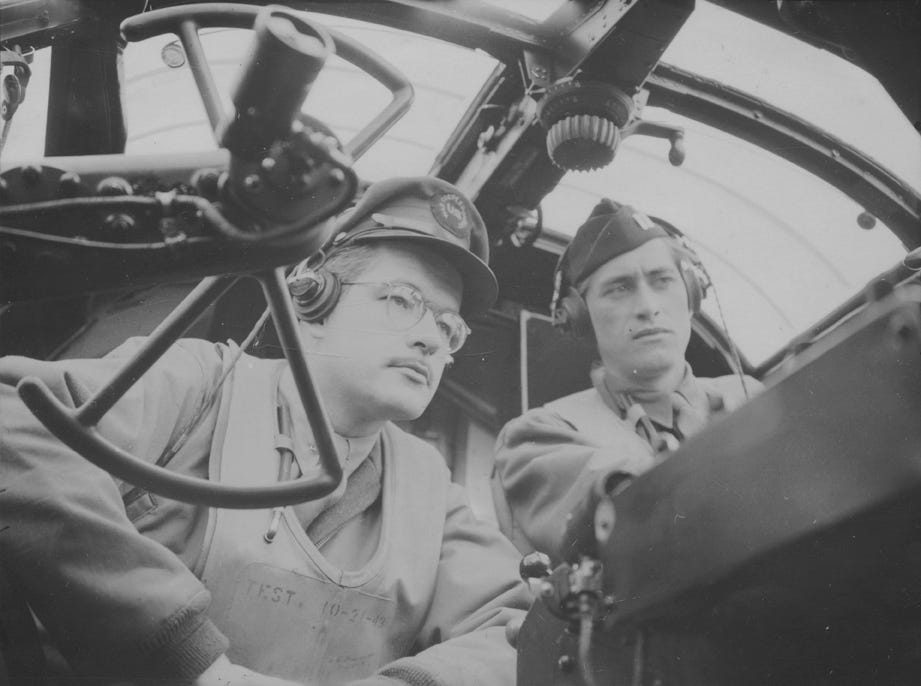The Writing 69th flies to Wilhelmshaven
To hear Andy Rooney tell it, the lone mission flown by the correspondent collective known as the "Writing 69th" was a function of guilt as much as anything.
"I don't know whose idea it was but someone decided the reporters covering the Eighth Air Force ought to go on a mission themselves," Rooney wrote in his 1995 memoir, My War. "It probably grew out of the uneasy feeling we all had that we were watching too many young men our age die while we were writing stories about them and then going back to London for dinner."
Reporters assigned to cover the air war from England did indeed live a far different life than those with the infantry in North Africa. Most had flats in London, often shared with other correspondents, and simply drove out to the dozens of airbases around the capital to get what they needed for their stories before returning home each night.
That routine would change for eight of those men early in 1943 when they were selected to complete an intensive training course at Bovingdon, England, that compressed three weeks of work into one as preparation to accompany a bombing mission. Among the coursework: first aid, aircraft identification, and learning to fire a .50-caliber machine gun (even though correspondents were forbidden from using weapons).
In addition to Sgt. Andrew A. Rooney of Stars and Stripes, the group included Homer Bigart of the New York Herald Tribune, Walter Cronkite of United Press, Gladwin Hill of the Associated Press, Paul Manning of CBS, Robert P. Post of The New York Times, Sgt. Denton Scott of Yank and William Wade of the International News Service.

Their training was news in itself, and the wire services moved stories in early February about the men receiving "diplomas" upon graduation. Now all they needed was an opportunity to put what they had learned into practice, and the wait didn't last long for most.
In mid-February, they were split up and assigned to airbases to await an upcoming raid. There was only one complication: everyone wanted to fly on a B-17, the most intimidating bomber in the U.S. arsenal. But one of the public relations officers handling the group insisted at least one of them accompany a B-24 crew.
That was considered less glamorous duty, but Robert Post volunteered, saying it didn't matter to the New York Times what type of plane he was on.
Most of the Writing 69th began preparing for action before dawn on Feb. 26, with Manning and Scott the exceptions. The other six soon learned that the day's mission would hardly be a milk run; the Eighth Air Force would bomb Germany for only the second time, and they would be along for the ride.
Rooney, who had turned 24 the previous month, later described that day as the first time he had seriously considered his own death.
"A thousand things went through my mind," he wrote. "I wondered what I was doing there. Was it really necessary for me to volunteer for a mission that could easily cost me my life simply to get a story for the newspaper or to appear more legitimate in the eyes of the crewmen I was covering on a daily basis?"
But it was too late to pull out now, and Rooney didn't consider it. At the appointed time, he climbed aboard a B-17 called Banshee and they headed east.
The mission ended minutes later for one of his colleagues. William Wade was aboard a Flying Fortress that had to turn back after one of its engines quit just as it headed out over the North Sea. With that, Wade was denied the chance at glory he craved, and he aired his frustration in a short piece printed in his hometown Minneapolis Star.
"I hate to say it, but it seems nothing ever happens to Old Bill Wade," the dispatch began. "I have been a so-called war correspondent for more than a year now and have never seen a good scrap."
The other five reporters would see plenty that day, and only four would return to write about it.
The target was the German naval base at Wilhelmshaven, which would be heavily defended by fighters and flak. The scene that awaited them shortly before noon that day was sufficiently apocalyptic that future CBS television colleagues Rooney and Cronkite led their stories with similar verbiage.
In a story that went out on the INS wire because Wade couldn't offer a firsthand account of his own, Rooney's lead was quick and to the point: "We gave the Jerries hell at Wilhelmshaven and got some back in return."
The 26-year-old Cronkite made the same point with more of a flourish for UP: "It was a hell 26,000 feet above the earth, a hell of burning tracer bullets and bursting flak, of crippled Flying Fortresses and flaming German fighter planes."
Gladwin Hill's AP story probably was the most widely used by newspapers back home, and similar in approach to Cronkite's as a lengthy play-by-play of the flight with the correspondent as a key character. Though his B-17 was under fire for nearly two hours, Hill marveled, the veteran crew hardly seemed stressed.
"From the viewpoint of our ship and many others which suffered only a few flak holes," he wrote, "the expedition was less eventful than a peacetime cross-country flight in the United States."
His colleagues shared similar impressions of the cool-under-fire aircrews, but the common theme was minimal damage to their own bombers. Others had a more harrowing experience.
By one count, of the 65 American bombers that ended up attacking Wilhelmshaven that morning, seven were lost (in Cronkite's book A Reporter's Life he says it was 66 bombers with 13 lost).
One of them was a B-24 named Maisey, which was Robert Post's ride that day. The bomber came under fire by German fighters near Oldenburg and exploded in mid-air after both of its right-side engines were hit. Nearby planes reported seeing two parachutes emerge from the flaming wreckage.
After the surviving bombers returned to England, the correspondents made their way to RAF Molesworth to write their stories. Bigart, Cronkite, Hill and Rooney arrived within about 30 minutes of one another, but Post never showed up.
Despite their growing unease over Post's absence, adrenaline was still flowing as they pounded out their stories. Decades later, Rooney wrote that they were "all high with the relief of having the job over with" and proud of the eyewitness accounts they submitted.
Their stories were a sensation, splashed across front pages everywhere in afternoon editions on Feb. 27 and morning papers the following day. But the Feb. 28 New York Times included a different kind of front-page story: a report by London bureau chief Raymond Daniell that Post had been officially listed as missing.
The colonel in charge of the airbase to which Post had been assigned told Daniell he had urged the correspondent not to accompany that particular raid because the target promised to be so heavily defended.
"But Post said all correspondents had agreed to go the first time the opportunity presented itself and that he was not going to drop out because it was dangerous."
That pledge didn't mean the 32-year-old was enthusiastic about the assignment. According to one account, he told friends he didn't expect to return alive.
Post, a Harvard-educated New York native, had been assigned to the Times' London bureau since 1938 after serving as a White House correspondent the previous two years. He had made many friends in his five years in England, and once word got out that he was missing, theLondon bureau office "received a steady stream of telephone calls from persons in all walks of life ... inquiring for the latest news about Mr. Post and expressing concern about him."
His colleagues held out hope that he had been one of the men seen parachuting from the bomber, and press accounts continued to refer to Post as "missing" into the summer. On Aug. 11, the International Red Cross announced in Geneva that German authorities had identified Post's body along with others killed during the Wilhelmshaven mission.
Post would eventually be buried at the Ardennes American Cemetery in Belgium.
The loss of Post on the first mission derailed any notion of the Writing 69th flying on a regular basis with bomber crews, though reporters continued to go up occasionally the next few months.
The practice became more common as the ground war moved to mainland Europe, as correspondents not only accompanied bombing raids but jumped alongside paratroopers beginning with Jack Thompson of the Chicago Tribune dropping into Sicily in July 1943 with the 82nd Airborne.
While the practice never quite got to feel routine, and other correspondents would be lost on bombing missions before the war was over, the experience of riding along on a raid put the dangers of the air war into perspective.
Gladwin Hill summed it up this way after returning from Wilhelmshaven:
It was a fascinating trip for a reporter but as the boys discussed the casualties, contriving explanations of how the missing planes might have landed safely, it made you realize the vast difference between going on one raid and going on them all, week after week and sometimes day after day.
Anyone can go on one raid and averages say he'll get back safely. ... But like roulette, if you play the wheel long enough you can be sure a given number will come up. That's what these Fortress boys -- ex-college boys, ex-farmhands, and ex-truck drivers -- face week in and week out, willing, cheerfully, enthusiastically.
That's what makes you realize it is an honor to ride with them.






